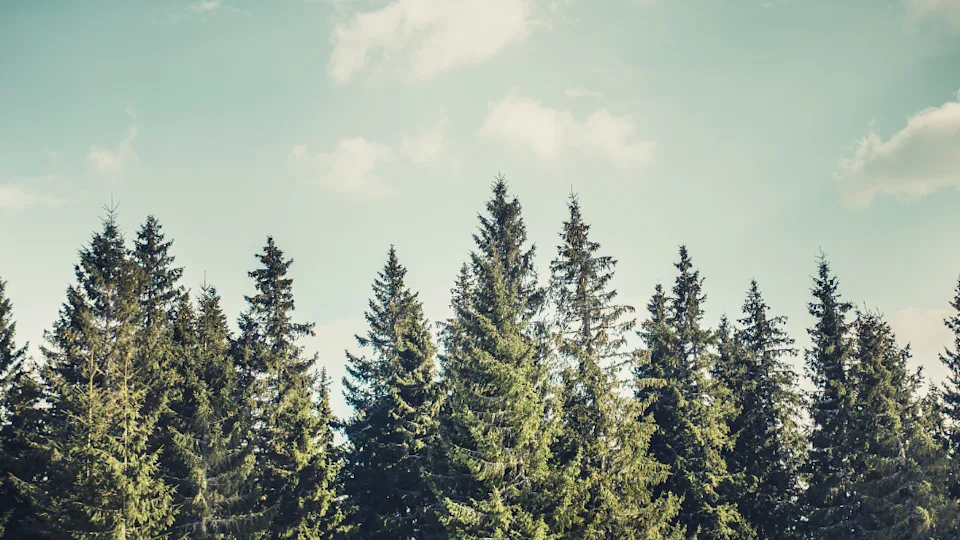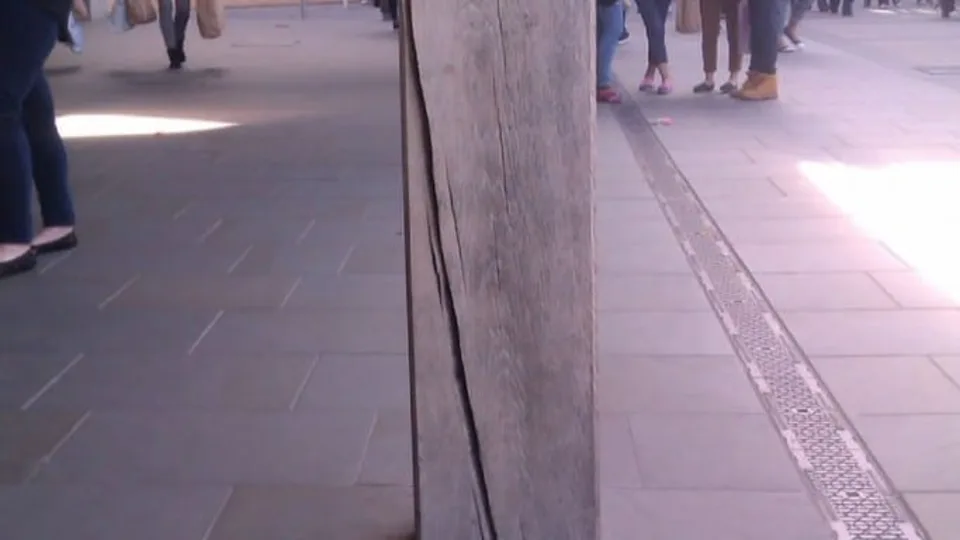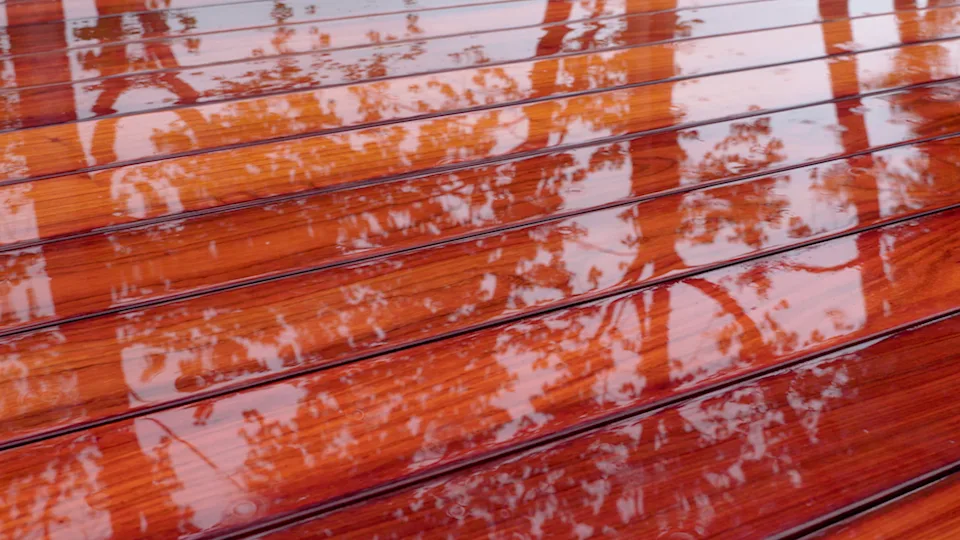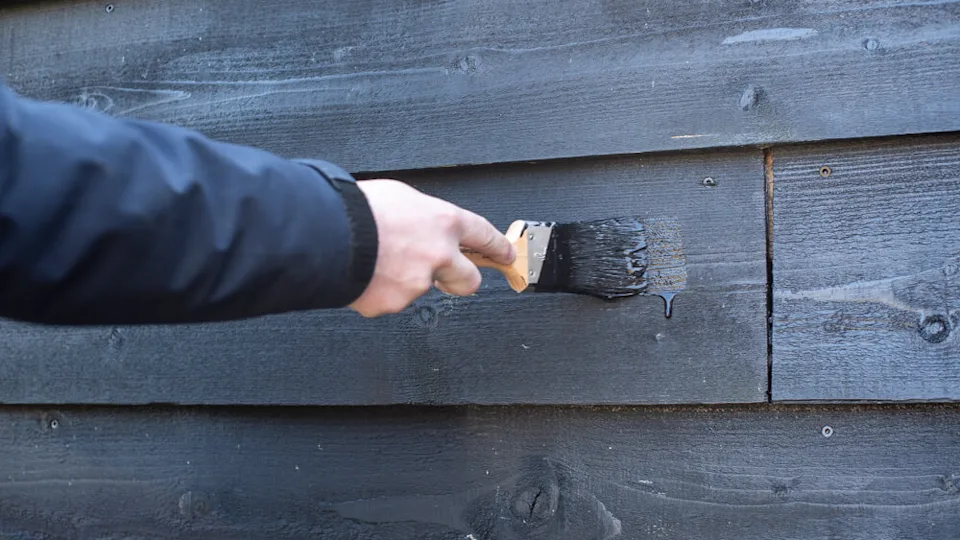European Larch Timber and Douglas
I love Larch Timber. It has such a wonderful colour and feel to it, a really lovely hue of pinks, oranges and yellows. We’ve recently built a raised decking area on our show site incorporating Larch decking, steps and balustrade, we built it around one of the very popular Tourist Gazebos and it really has worked very well.
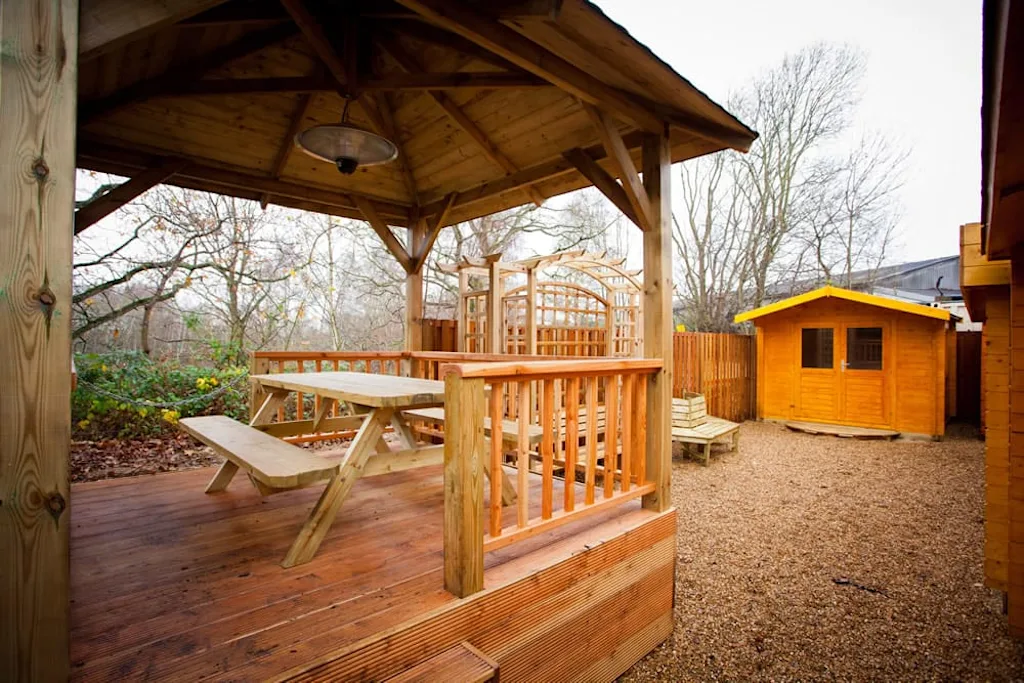
It looks gorgeous! Larch does not need treating but I love the colour of it and to ensure we can see it for a very long time we’ve treated it with Clear Carefree Protectant.
Of course, being made from Larch you do not have to treat it, it is a very oily, resinous and dense wood that does not need any maintenance. It will weather eventually to a silvery grey and this process depends on its location, weather conditions and positioning. If you wish to preserve the gorgeous colour, you can treat it with a clear timber treatment.
On a recent to visit Tuindeco we went through the latest products for the coming season and I was really pleased to see as well as the stunning Larch Modular Garden Building Range they are also introducing a Gazebo range, all made from Larch. I have already ordered one and we’ll be putting it up on show soon, I’m sure sales of these will far exceed the pine ones, not only for its beauty but also its extensive longevity, strength and ease of care.
Larch is such a wonderful timber, it’s been used in construction for years and is also used with boat building, in Central Europe it has been long regarded as one of the best building timbers. It’s stronger than pine and is very popular with architects for external cladding and outdoor structures. Un-dried larch is particularly good for heavy structural work.
Larch is unusual amongst the softwoods as it is deciduous and sheds its pine needles in the Autumn. It also features in Lapp and Siberian folklore as the ‘World Tree’. Smoke from burning timber is said to ward off evil spirits and to induce visions (not recommended) by their Shamans.
Properties of European Larch
Larch boasts strength and an ability to withstand constantly changing wet and dry environments. Couple this with its natural rot resistant properties, wonderful colour and fine texture which make it lovely to work with and enjoy in your garden.
Larch is a deciduous, softwood, conifer tree, highly resinous, and a medium density wood (530 kg/m3)
Tuindeco Larch is sourced from Western Europe – PEFC or FSC. Environmentally sound and sustainable.
Being a very dense wood it can resist constant changes from wet to dry with very little distortion, warping and shrinkage once dry. It can be prone to surface splits but this does not affect the strength, longevity or durability.
A strong timber and stronger than other conifers such as Spruce and Pine. larch wood is 60% stiffer than European redwoods, 30% stronger in bending and compression, 40% harder. It does though have similar crushing and impact properties to that of pine and spruce.
With a wonderful straight grain and small knots, larch has a faint scent. It is reddish, orangy, pinky in colour with contrasting white sap rings. It has fine texture and a high definition of grain.
Low maintenance and does not need treating, when allowed to weather if becomes a silvery grey colour. It is a good idea though to treat it where it is directly in contact with the ground.
Larch is in the durability class of 3 – 4. Durability is the measurement of a 50mm x 50mm cross section of timber left in the ground unprotected. Class 3 is 10 – 15 years. Class 4 is 5 – 10 years. When untreated and NOT in ground contact you can expect a life of 50 – 60 years. When treated and outdoors the life expectancy is 100 years.
Larch Timber Limitations:
Like everything there are some limitations and foibles that it’s worth bearing in mind when you are working with Larch.
Due to its dense nature larch can split easily if you nail it without some preparation. Always drill a pilot hole before nailing or screwing to stop any splits appearing.
Larch can leach slightly when new and can stain concrete surfaces. This is due to the high tannin content. It is a good idea to treat the timber when in contact with the ground
The Tannins can also react with iron and will produce and blue / black colour stain. Ideally always use non-ferrous nails and screws to guard against this.
Larch Tree Identification
A couple of useful videos to aid in the identification of a larch tree should you wish, the first one I found particularly useful!
Tuindeco Larch Timber Products
The ranges of timber are constantly expanding, numerous lengths, profile, and pieces are available for your own Larch wood construction project
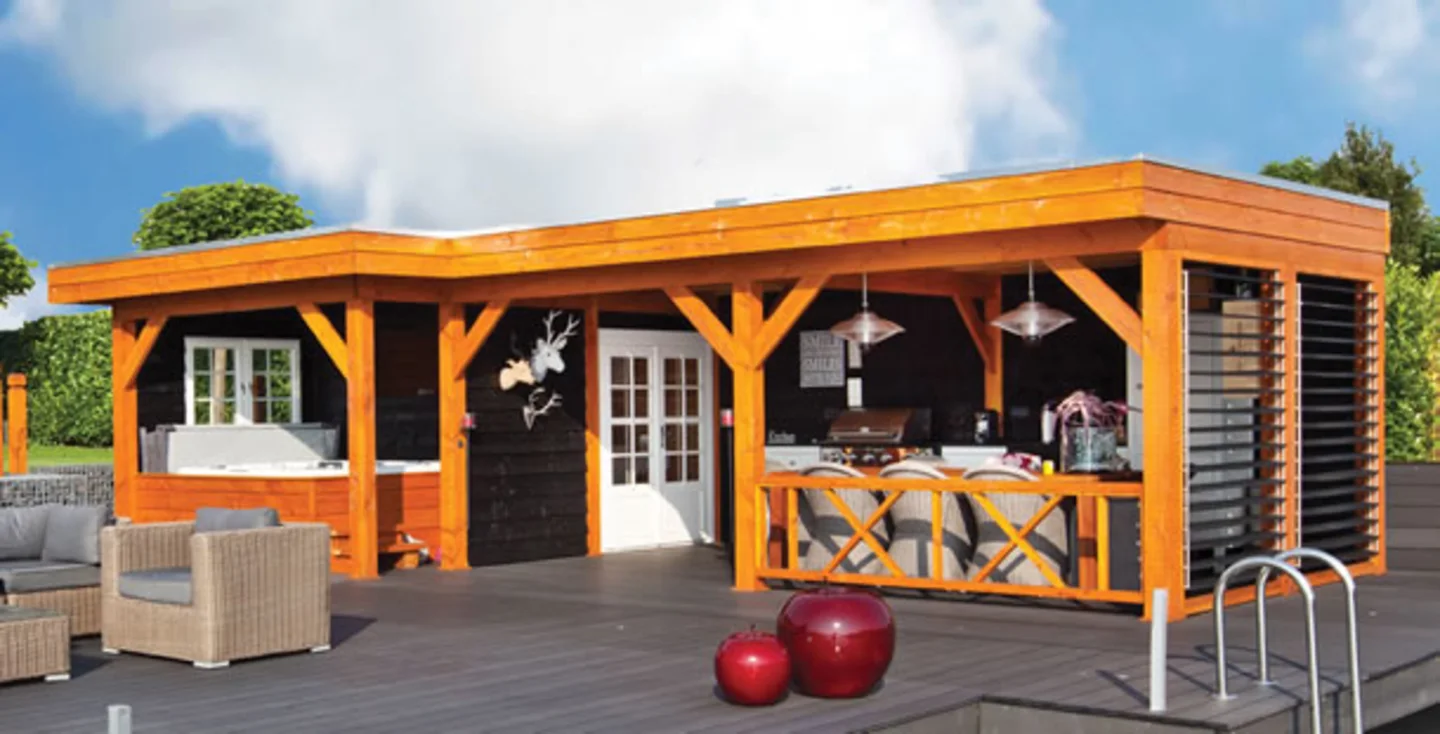
Also available is an extensive range of Douglas modular buildings in both flat roof and apex roofs. Douglas is very similar to larch in colour and density. a very popular choice for garden structures.
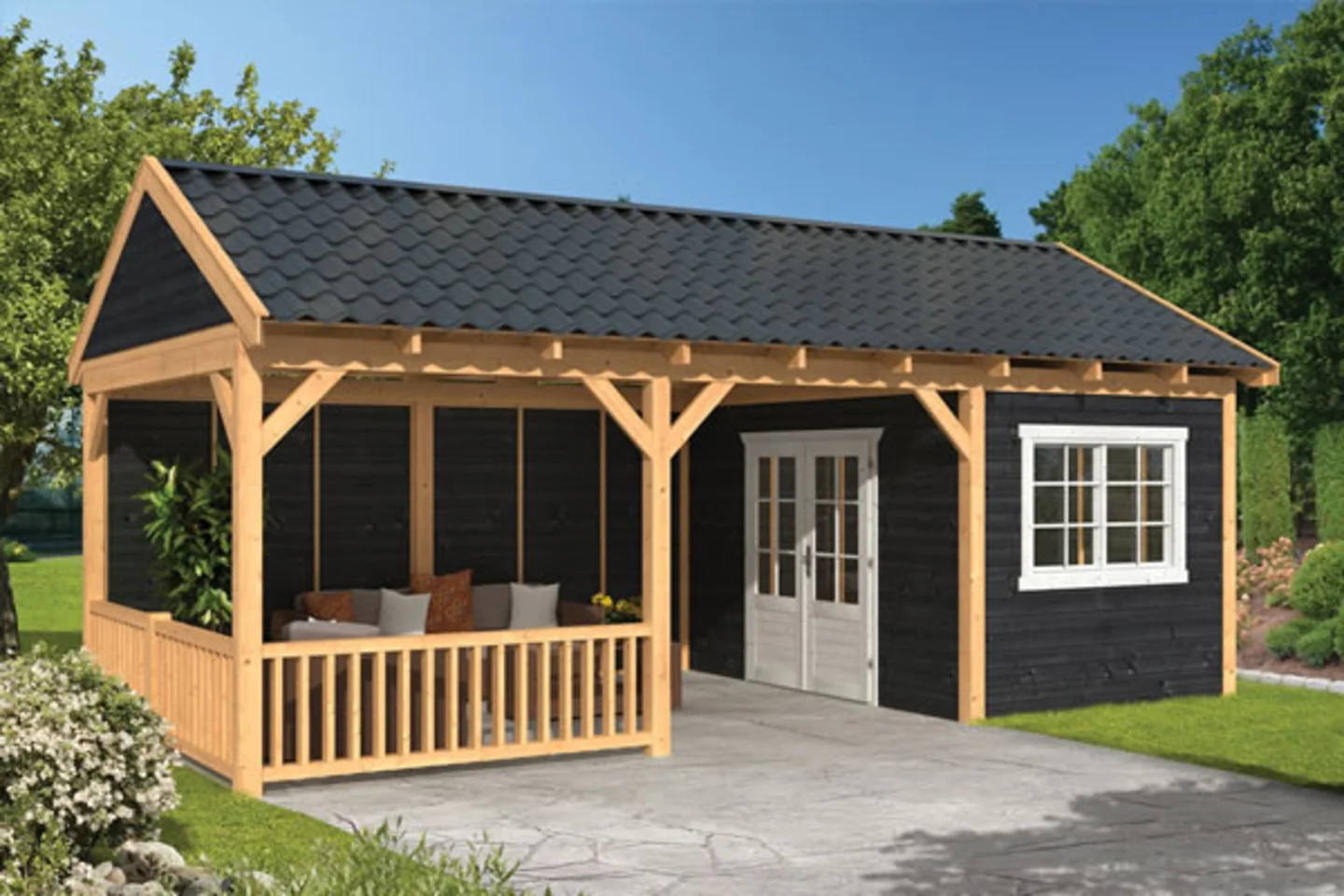
New for this season are Larch Gazebos: I can see these really taking off as these will make a stunning addition to any garden.





